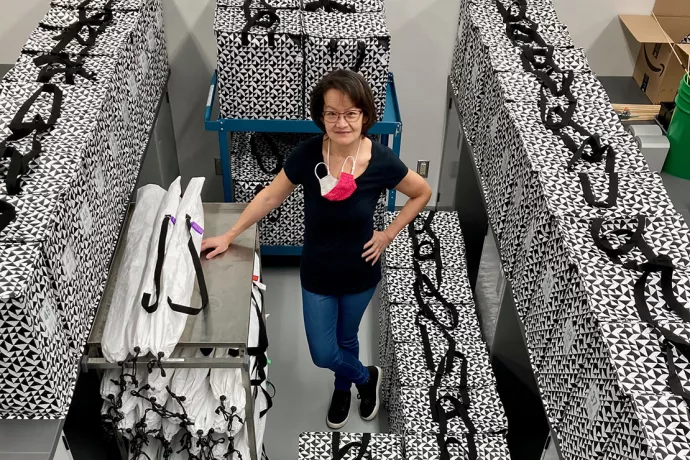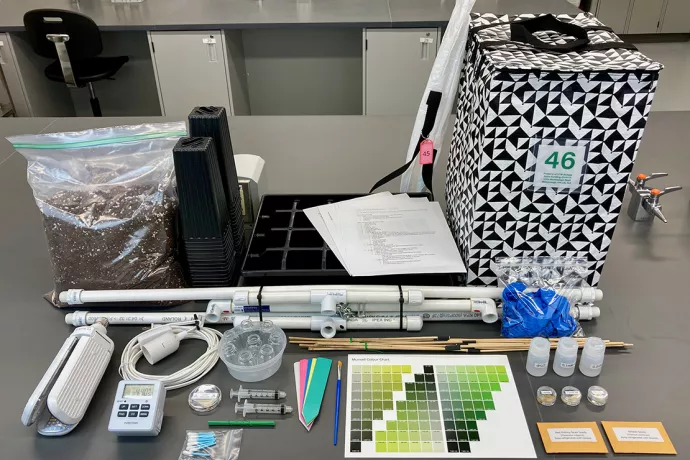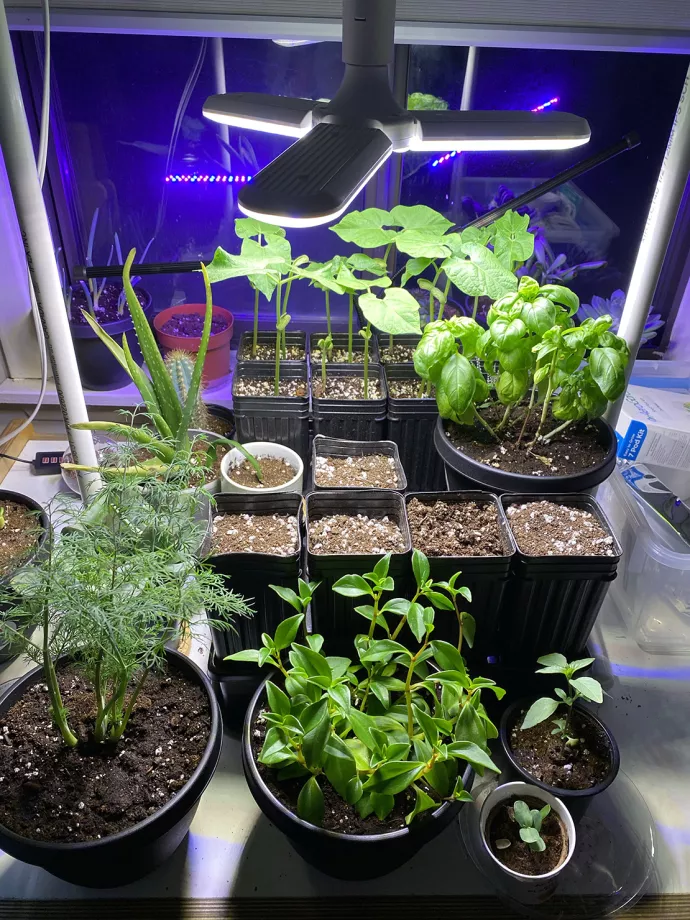
Hands-on learning blooms in UTM biology course during pandemic
A new innovation in remote learning has taken root in a biology course at the University of Toronto Mississauga: bringing the lab to students.
Biology professor Ingo Ensminger teaches Plant Physiology, a third-year course focusing on how plants are formed and function in their environments. The pandemic prevents students from completing their laboratory work on campus, but last summer, Ensminger had an idea that became the seed for “lab in a bag.”
This winter semester, students in the third-year course are getting their hands dirty with their own comprehensive plant experimentation kits. With all the necessary supplies at hand, plus regular check-ins with a teaching technician, they are independently growing and studying plants at their homes.
“My first thought was that this could bring some cheer—a little piece in their daily schedule they might look forward to,” Ensminger says. “I know how difficult lockdown can be for students, spending all day in front of a computer.
“Now they have a lab component that is a more haptic experience, where they can work with their hands and experiment for themselves.”

When he ran the idea by teaching technician Lisa Cheung, she was at first skeptical that it could be done easily and affordably. But some quick research proved it was doable, plus the Department of Biology agreed to provide funds, so they went for it.
"It’s an experience beyond just crunching data at a computer,” Cheung says. “Growing a plant can give a sense of satisfaction; it’s something to do at home at a time when we can’t get out to do much of anything.”
Over several weeks last fall, Cheung identified and purchased supplies for growing seven plants—a mix of wheat and kidney bean plants. She set them up in different rooms to determine the best growing conditions. She tested five different grow lights until landing on the right option. Along the way, she recorded her insights to develop an instruction sheet for students.
“Many students have never grown anything from seed before. I took photos along the way of growing my plant, and made a document for the experimentation process, and a schedule for the different stages,” Cheung says.
Needing help to make a light stand, Cheung turned to Peter Duggan, supervisor of UTM’s Academic Workshop, which designs, manufactures and repairs objects for the UTM research community. He devised a simple stand out of five PVC pipes that can be easily assembled.
Cheung then put together 50 lab-in-a-bag kits for 48 students. Each kit contains 23 items, including hormone solutions, planting gloves, plant support stakes, a timer, and a Munsell colour system chart for gauging colour changes in plant leaves.

The students picked up their kits two weeks ago, and Cheung is going on the journey with them. She is posting regular videos in the course’s learning management system with tips as well as updates on her own plants.
“I’m hoping this gives them appreciation for plants and stimulates an interest in studying plants,” Cheung says.
That joy is already unfurling for Tatiana Harvey, a fourth-year undergraduate student specializing in comparative physiology. There was some initial hesitancy because she’d never grown a plant before. With that also came excitement at this special opportunity to do actual lab work, which she has missed during the pandemic.
“I wasn’t sure what the kit would be like, but I was quite amazed—it’s so intricately designed, it’s clear they put a lot of thought and time into its preparation,” Harvey says.
She set up her plant station by a large window in her kitchen, and she checks in on them each morning, seeing if the soil needs water. The plants recently began to germinate and Harvey says they’re sprouting at a fast pace, such that she has had to adjust the height of the light.
Tending to the plants is a bright spot in Harvey’s day, at a time when one day feels much like the next.
“I’m thankful for them giving us something to keep our minds occupied,” Harvey says. “In a world where so many things are happening, it’s nice to be able to take care of something.”
